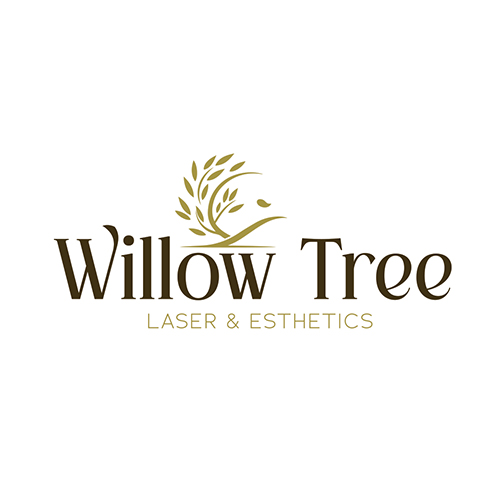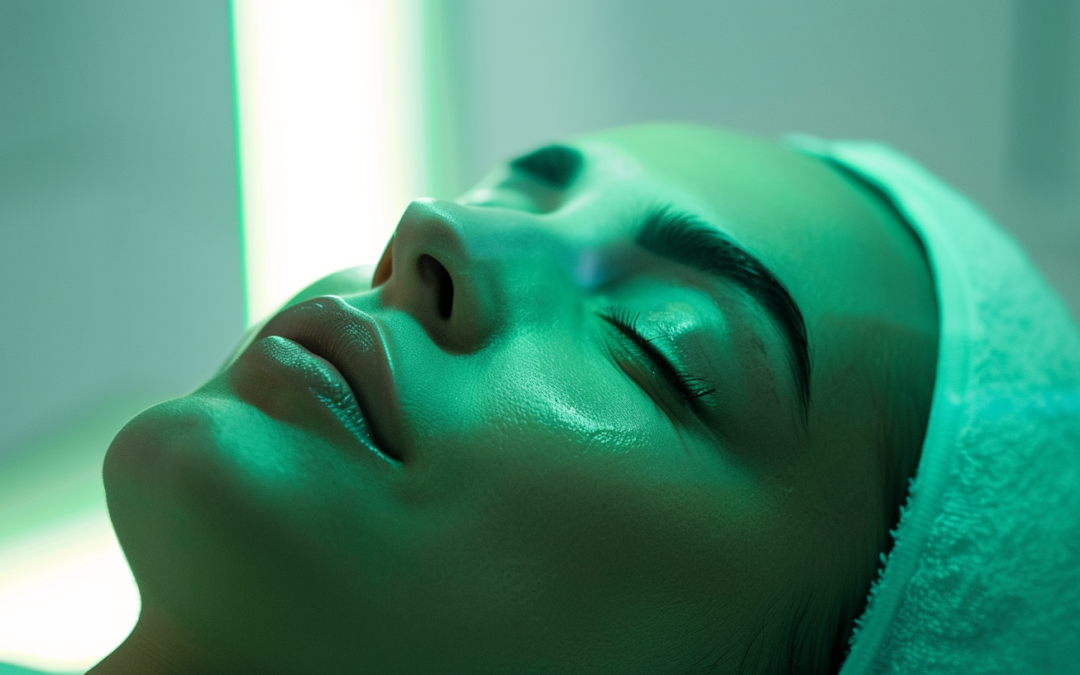About The Author

Kiara Allan
Esthetician
Kiara Allan is an Esthetician at Willow Tree Laser & Esthetics in Strathmore, Alberta. She is an expert at all things skin-care. Both basic and advanced.

LED Light Therapy: A Comprehensive Guide to Benefits and Applications.
LED light therapy has become a popular and successful treatment for a variety of skin disorders. This non-invasive process has various advantages, including treating acne, minimizing fine lines, and minimizing the effects of aging. One of the most appealing characteristics of LED light treatment is its compatibility with different skin types, making it a versatile solution for many people. In this post, we’ll look at the science behind LED light therapy, the many types of lights utilized, and how they address certain skin conditions. We’ll also compare LED light therapy to IPL (Intense Pulsed Light) treatments so you can make an informed choice.
How It Works:
LED (Light Emitting Diode) light therapy penetrates the skin at variable depths by using light of different wavelengths. This procedure increases cellular activity and can have a variety of positive benefits. Unlike other light-based therapies, LED light therapy is soft, painless, and free of dangerous UV rays, making it a good choice for ongoing treatment.
Types of LED Light Therapy:
There are two main forms of LED light therapy: blue light and red light. These can be used separately or in combination to treat various skin conditions.
Blue Light Therapy:
Blue light treatment is commonly used to treat acne. It works by attacking the skin’s uppermost layer, which contains acne-causing bacteria (Propionibacterium acnes or P. acnes). Blue light kills these germs, lowering the incidence of acne. It also helps to regulate sebum production, which is a contributing factor to acne breakouts.
Red Light Therapy:
Red light therapy penetrates the skin more deeply than blue light. It is known for its anti-aging properties because it promotes the creation of collagen, a protein that helps keep the skin’s suppleness and firmness. Red light treatment also decreases inflammation, which can help calm and reduce redness caused by a variety of skin conditions.
Combining Blue and Red-Light Therapy:
Combining blue and red-light treatment can provide a more holistic approach to skin care. Blue light targets acne-causing bacteria, reducing outbreaks, whilst red light addresses underlying inflammation, promoting skin renewal. This combined therapy is especially useful for people who suffer from acne as well as symptoms of age.
Advantages of LED Light Therapy
Treating Acne:
Acne is a prevalent skin condition affecting people of all ages. Traditional treatments frequently include topical or oral medications, which might have negative effects and different degrees of efficacy. LED light treatment provides a gentler option with fewer negative effects. Blue light treatment, which targets and kills acne-causing bacteria, can drastically reduce the frequency and severity of acne outbreaks. Regular treatments can help keep your skin clear over time.
Reducing Fine Lines and Wrinkles:
As we age, our skin’s natural collagen production decreases, leading to the appearance of fine lines and wrinkles. Red light therapy stimulates collagen production, helping to restore the skin’s youthful appearance. With consistent use, it can reduce the appearance of fine lines and improve skin texture and firmness. This makes red light therapy an excellent non-invasive option for those looking to combat the signs of aging.
Improving Skin Tone and Texture:
In addition to treating acne and symptoms of age, LED light treatment can enhance general skin tone and texture. By reducing inflammation and stimulating cellular repair processes, it can help achieve a smoother, more even complexion. Users often report brighter, more radiant skin after regular treatments.
Non-invasive, suitable for all skin types:
One of the primary benefits of LED light therapy is its non-invasiveness. Unlike needle-based or surgical procedures, LED light therapy is painless and does not require any downtime. This makes it ideal for people who have sensitive skin or prefer a gentle approach to skincare.
Its non-invasive nature and compatibility with various skin types make it an appealing alternative for many people.
Treatment Process and Frequency
Single vs. Multiple Treatments:
While a single session of LED light therapy can be calming and beneficial, getting obvious and long-term outcomes usually requires multiple treatments. A single session may provide a momentary improvement in skin appearance, but ongoing treatments are required to address deeper skin conditions and preserve results.
Professional vs. At-home Treatments:
LED light treatment can be performed both professionally and at home. Professional treatments are typically more powerful and can be customized to your individual skin needs by a qualified esthetician. At-home LED gadgets, such as masks and handheld devices, have grown in popularity due to their ease of use and low cost. These devices are often less potent, but they can still give considerable benefits with continuous use.
Recommended Treatment Frequency:
Professional treatments are often scheduled one to two weeks apart. This allows the skin to respond to the treatment and begin the healing process. At-home gadgets can be used more regularly, with certain models built for everyday use. Consistency is essential in any treatment situation.
Different Colours and Their Significance
Blue Light:
Blue light effectively treats acne by attacking the P. acnes bacteria. It also aids in oil regulation, making it perfect for people with oily or acne-prone skin.
Red Light:
Red light treatment is primarily helpful for stimulating collagen formation and reducing inflammation. This makes it ideal for anti-aging therapies as well as boosting skin suppleness and texture.
Infrared light:
In addition to blue and red lights, certain LED gadgets produce infrared light. Infrared radiation penetrates the skin’s deepest layers to promote healing and reduce inflammation. It is frequently used in conjunction with red light to boost anti-aging properties and improve overall skin health.
Comparing LED Light Therapy and IPL:
IPL therapy uses a broad spectrum of light to address various skin concerns. Unlike LED light therapy, which uses specific wavelengths, IPL emits numerous wavelengths at once. This makes it useful for treating a variety of conditions, including hyperpigmentation, vascular lesions, and unwanted hair.
Key Differences:
- LED Light Therapy targets specific skin conditions by using single wavelengths of light, such as blue or red. It’s non-invasive and painless.
- IPL Therapy utilizes a wide range of light to address many conditions concurrently. IPL treatments might be more severe and cause some discomfort, requiring the use of cooling equipment throughout the sessions.
Treatment Sensation:
- LED Light Therapy is painless and comfortable, especially for delicate skin.
- IPL Therapy may cause moderate discomfort, similar to a rubber band snapping on the skin. Cooling gels and gadgets are frequently used to alleviate discomfort.
Frequency and Convenience:
• LED Light Therapy can be done regularly, with professional sessions every 1-2 weeks and at-home devices can be used multiple times per week.
• IPL Therapy typically requires 4-5 weeks between sessions to recuperate and respond to the treatment.
Cost and Accessibility:
• At-home gadgets make LED light therapy more accessible and inexpensive. Professional treatments are typically less expensive than IPL.
• IPL therapy is typically more expensive due to the equipment and professional knowledge required. Treatments must be administered by trained specialists.
Choosing between LED light therapy and IPL depends on personal skin concerns and preferences. LED light therapy is suitable for those seeking a gentle, non-invasive treatment that may be administered at home or in a professional setting. It is especially useful at treating acne and reducing the effects of aging. On the other hand, IPL is more suited for people who want to address several skin conditions, such as pigmentation, vascular lesions, and hair removal, under professional supervision.
LED light therapy is a versatile and effective treatment for a wide range of skin concerns, including acne, fine lines, and overall skin rejuvenation. Its non-invasive nature and compatibility with various skin types make it an appealing alternative for many people. Understanding the various types of LED light therapy and their distinct benefits allows you to make more informed skincare decisions.
Whether you choose to undergo expert treatments or buy an at-home gadget, consistency and correct usage are essential for attaining optimal results. Additionally, comparing LED light therapy to other treatments such as IPL will help you identify the best method for your specific skin needs. Accept the promise of LED light therapy to attain healthier, more beautiful skin and experience the benefits of this groundbreaking skincare technology. Come visit us at Willow Tree to discover which treatment is best suited for you and your skin!
Want To Know More?
The staff and technicians at Willow Tree Laser & Esthetics are experts in their fields and we want to share that knowledge with you. See our knowledge articles below and if you don’t find what you’re looking for, never hesitate to reach out to one of our experts to ask a question.

